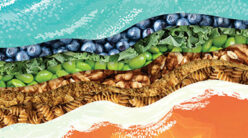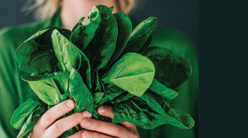Let’s face it. Tanned skin is gorgeous. Some even think it looks healthy. But no matter how stunning you may look walking around the office four shades darker than everyone else, you may be setting yourself up for a rather un-gorgeous future.
“Pigmentation is a response to injury,” says Henry A. Greenblatt, M.D., a dermatologist in Newburgh, New York. He says that your skin becomes tan “only to protect itself from further injury. I have patients who’ll go to a tanning booth and they’ll say, ‘Well, I’m going on a cruise to the Caribbean and I want to get some tan before I go so I don’t have problems down there.’ And I say, ‘Then you’re damaging you’re skin now and you’re damaging it later. Why don’t you skip both?’”
Greenblatt’s advice is simple and to the point. “Wear sunscreen, avoid the midday sun, and make sure you don’t burn. Do whatever that takes—whether that means covering yourself with clothing or staying in the shade. There are a variety of ways to avoid damage.”
One of Many
Lying in the sun is only one way to earn skin damage. Sometimes long hours of pursuing fitness—playing tennis, swimming, or walking—without protecting your skin can bring unwelcome results. Same with weeding the garden or mowing the lawn. Skin needs to be protected.
Atmospheric pollution represents another issue. Increasing levels of pollution are causing earth’s ozone layer to weaken, allowing more solar radiation to reach us. Even though ultraviolet waves “are longer and have less energy than ionizing radiation like X rays,” says Andrew Weil, M.D., in his book, Ask Dr. Weil, “they’re still powerful enough to penetrate living cells in the skin and cause DNA damage.”
He goes on to say that “UV radiation doesn’t just hurt the skin, it can also cause loss of vision as you grow older by damaging the retina (macular degeneration) and the lens (cataracts).”
Using a good sunscreen
can help protect us as we enjoy being outdoors on hot, sunny summer days. Light, breathable long-sleeve shirts, long pants or skirts, wide-brimmed hats, and a pair of good-quality sunglasses represent powerful antidotes for sun-damaged skin.
Perhaps personal vanity dictates that you’d rather not walk along the beach at noon dressed this way. Then schedule peaceful promenades in the early morning when the sun is just coming up, or late in the afternoon when it’s hovering far to the west. You might even want to try a romantic moonlit walk. No one has ever suffered from moonburn.
If you do go out during the day, use a sunscreen that’s adequate for the job. A cream or spray boasting a SPF-l5 rating should be considered a minimum for blocking both the UV-A and UV-B rays. And don’t forget the UV-protective sunglasses.
Skin Cancer on the Rise
“I’m seeing skin cancer in my office every single day without exception,” says Dr. Greenblatt. Looking back over his twenty years in the healing arena, he adds, “Early on I didn’t see many people in their thirties or even forties suffering from skin cancer. Now I’m seeing it in people in their twenties.”
Isadore Rosenfeld, M.D., in his book, The Best Treatment, writes that until quite recently, “bronzed skin conjured up images of affluence—lots of leisure time, exercise, sun, and fresh air. It was viewed as both beautiful and healthy in men and in women. We now know that that’s all wrong. The long-term consequences of chronic overexposure to the sun are: (a) skin cancer, of which one type, the malignant melanoma, is life threatening; and (b) skin damage with resultant premature aging and wrinkling. But despite all the public education about the hazards involved, countless diehards still spend most of their vacation lying motionless for hours baking in the sun by the pool or on the beach. When they can’t get the real thing down south, they frequent tanning parlors up north.”
Tans on Demand
Tanning salons have become popular with many people. Andrew Weil, M.D., again in his book, Ask Dr. Weil, reports, “The rays in a tanning parlor can actually be stronger than ordinary sunshine.” Citing a Swedish study from a few years back, he adds, “people under age thirty who used tanning salons more than ten times a year had a seven-times higher risk of melanoma than other people. Most skin cancer is related to UV radiation, and melanoma is the deadliest kind. There’s no such thing as ‘tanning’ rays, as distinct from ‘burning’ rays. The UV-A light of tanning salons is at least as harmful as the UV-B rays you get during peak sunlight hours.”
Although he doesn’t tell people to avoid the sun at all cost, Dr. Weil does warn, “a tan is definitely not a sign of health. The only good thing about a suntan is that it means you’ve been outdoors where you may have been getting exercise, relaxing, and having fun. To get tan in a shop, without the associated healthful activities, is not quite what the doctor ordered.”
So how about a sun lamp instead? Again, the answer is no. An article in the Charlotte Observer heralded this important piece of advice: “Regularly baking to a golden tan under sun lamps can increase the risk of malignant melanoma, a sometimes fatal skin cancer.” The study mentioned in the article that analyzed the lifestyle and melanoma risks for women between 30 and 50, found what the researchers said was the strongest evidence yet that artificial sun tanning can be dangerous to healthy skin.
It’s worth noting that the lighter a person’s natural skin color, the greater damage potential. Hair color is also a factor. Redheads burn easier and faster.
“Here’s the bottom line with regard to sun bathing,” says Dr. Rosenfeld. “The ‘beauty’ it confers is only skin deep, but the problems are far from superficial. You will pay dearly for whatever cosmetic benefits you derive early in life should you end up with skin cancer or prematurely aged, washboard skin at the time in your life when most of us prefer to look younger rather than withered.”
The Melanoma Menace
Many skin cancers are curable, Greenblatt says, especially if caught early. “But the one that’s a big deal is a melanoma, because that can truly be lethal, spread quickly, and do a lot of damage. People see a little black spot and don’t think much of it, and then they’re dead.”
Denise Bright in Charlotte, North Carolina, used to love lying in the sun. When the weather was too cold to lie out, she often went to a tanning salon. To be safe, she saw her dermatologist once a year for a check up. But when her mother had a melanoma removed several years ago, Denise began seeing her doctor every six months.
Now, even though she checks her skin regularly, she, too, has had a melanoma removed and must see her dermatologist every three months. What may be additionally disturbing is that she didn’t find the melanoma herself. Her dermatologist did. And, she says, “I’m having to use a chemotherapy cream on the tops of my feet. They have sun damage, too.”
Now when she’s in the sun, she wears a good sunscreen. “I’ve learned my lesson,” she admits. As for the tanning bed, “I wouldn’t get back in one. Having a tan is not worth risking your life.”
Children are vulnerable to sunburn and sun damage as well. “But,” says Dr. Greenblatt, “I think kids are probably safer right now than they’ve ever been because most young parents are very aware of the information on sunscreen, sunburn, and skin cancer. They protect the kids routinely. So kids are growing up with sunscreen being applied as second nature. They accept it.
“Australia has the highest incidence of melanomas among Caucasians,” Dr. Greenblatt states. “But they have taken that very seriously. I visited Australia and observed a program that I thought was wonderful. At the elementary schools during recess when the kids came out to play, they had a program called very simply ‘No hat, no play.’ All of the kids were wearing hats that had a brim 360 degrees around their head. And they also had shade shelters—they looked like little bus shelter enclosures at the end of playing fields.”
If we think we’re making too much of being safe in the sun, he says, “Here’s a whole country that has embraced it because they have so much skin cancer, and they’re trying to help their young people.”
Winter Sunburns
Sometimes a sunburn can surprise you. In fact, some of the worst sunburns Dr. Greenblatt has seen “are in people in the winter who go off to Colorado skiing for a weekend or a brief vacation. They’re at a higher altitude and there’s less atmospheric protection from ultraviolet damage. There’s also a lot of reflection off the snow. I’ve seen people come back with sunburns on their faces and their eyes swollen shut. And this was in the middle of winter.”
Speaking of eyes, a good pair of sunglasses is a must. “UV protection is what you want,” insists an article in the Charlotte Observer, “since an absence of it has been linked to the formation of cataracts.”
Sunglasses with polarized lenses with anti-reflective coating in addition to high UV-A protection are a good investment if you’ll be spending much time in the sun. And although these can be pricey, it’s sometimes possible to find them for a tenth of the price in discount department stores. Check the label for percentages of UV protection. The UV-A protection should be in the 320 to 400 range, and the UV-B in the 290 to 320 range.
So, go ahead and dream of those sunny beaches and days filled with sand and surf. Just remember to take a few precautions. After all, optimum health isn’t reflected by the color of your skin. It’s revealed by the number of summers you live to enjoy the sun.






